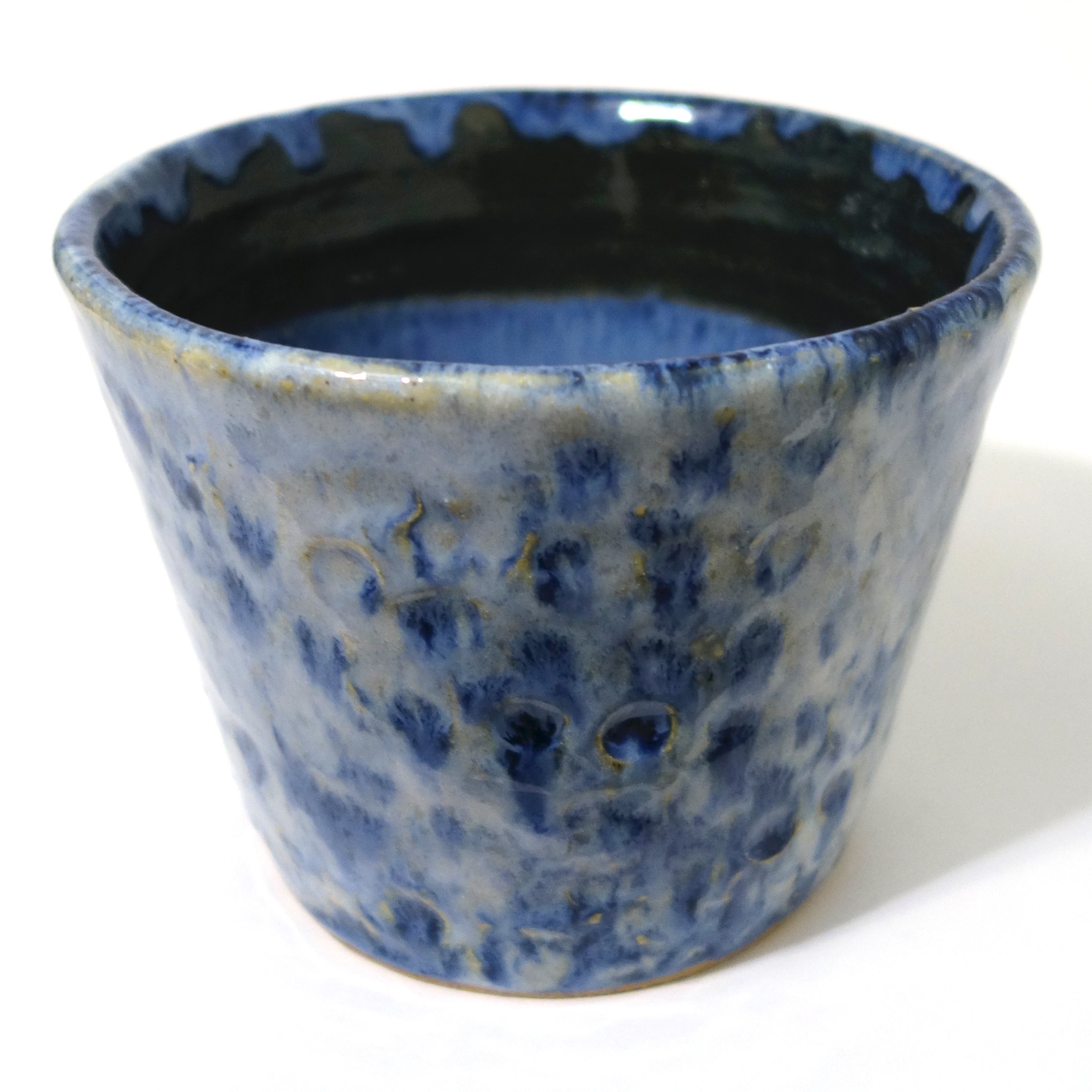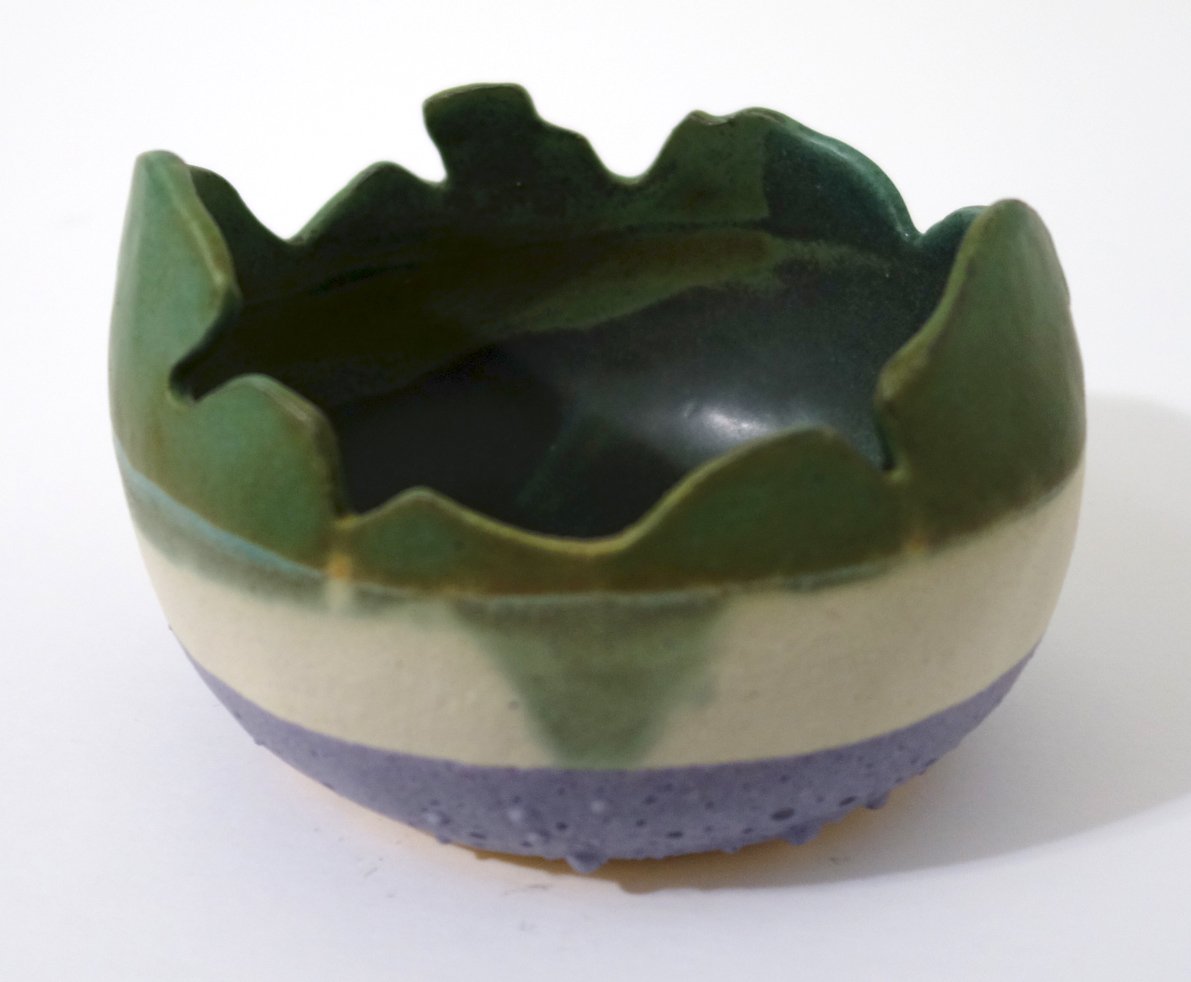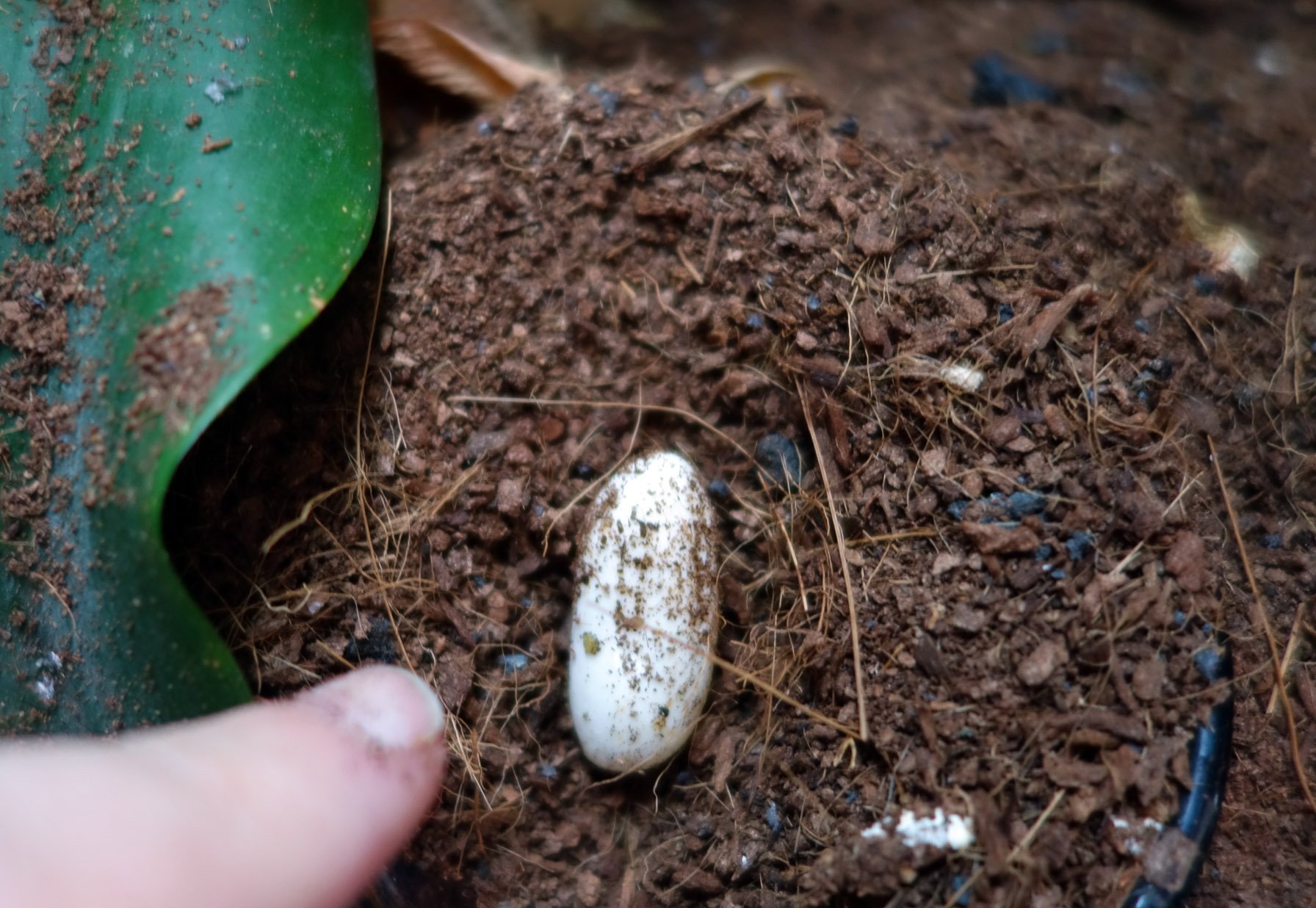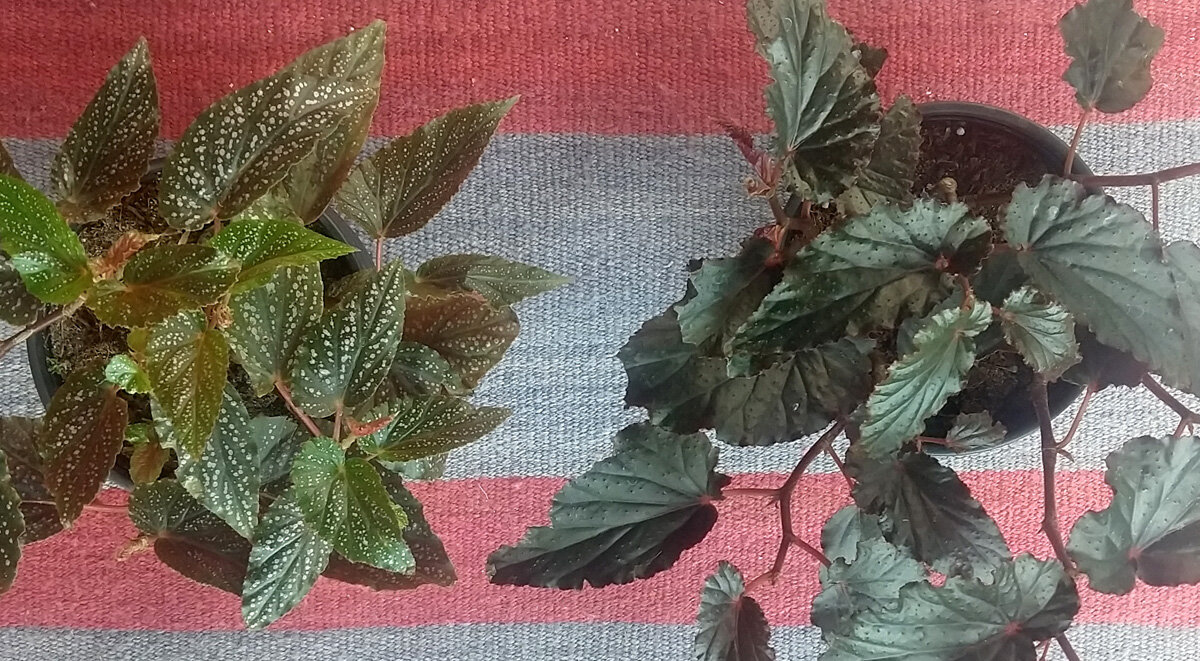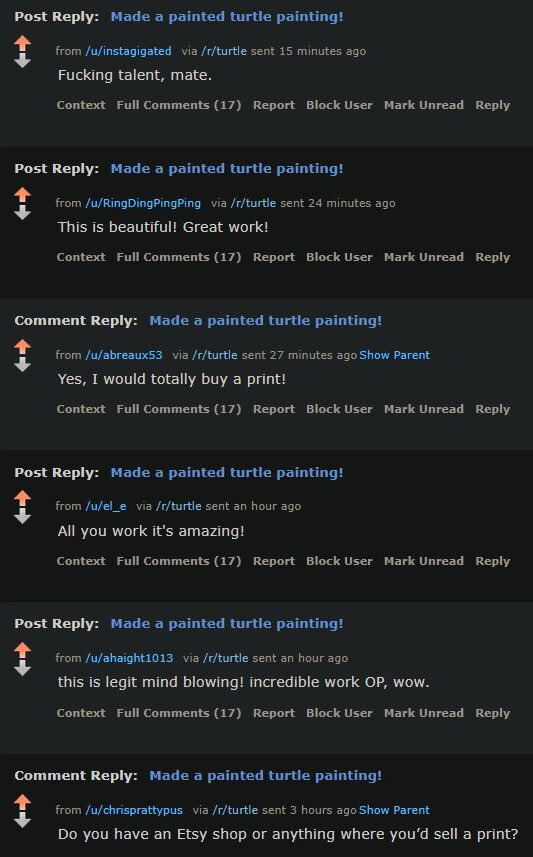I had a great time in Puerto Rico over spring break - we hiked a trail in El Yunque and swam in one of its rivers, had several beach excursions, toured the Rio Camuy Caverns, kayaked the Laguna Grande bioluminescent bay, and went out dancing! Since I fully used my break time, I immediately returned to work so I haven’t had a chance to pull any images off my cameras yet; here’s a cell phone photo on the trail down to the Rio Camuy Caverns to tide you over until then!
General Interest
Spring Break in Puerto Rico!
I’ll be visiting Puerto Rico with my friend and colleague Stacey Alex over spring break! As you might imagine, I’m excited to get to soak in the natural beauty of the island. Our planned outdoor itinerary includes kayaking on the Laguna Grande Nature Reserve’s bioluminescent bay, hiking in El Yunque National Forest, a variety of beach visits, and exploring the Rio Camuy Cave Park.
I’ll post some photos when I return!
President (Chair) of the Sioux City Art Center Board of Trustees
In our most recent meeting, I was nominated and elected as the new President (Chair) of the Sioux City Art Center Board of Trustees. I look forward to serving our community in this role!
Title IX Religious Exemptions
Title IX of the Education Amendments of 1972 is a federal civil rights law which reads, “No person in the United States shall, on the basis of sex, be excluded from participation in, be denied the benefits of, or be subjected to discrimination under any education program or activity receiving Federal financial assistance.”
All three of the higher education institutions I have taught at have complied with this law. Up until recently I had believed - mistakenly, it turns out - that any educational institution had to make a choice between adhering to Title IX and receiving federal funding, or opting out of both.
I have now learned that institutions can request religious exemptions to Title IX, receive those exemptions, and then are explicitly allowed to discriminate against their students and employees and still receive federal funding. Furthermore, the Office for Civil Rights has approved every religious exemption Title IX request filed. This includes hundreds of institutions; in late 2016 that number was at 245 and it continues to grow each year. Depending on their religious tenets, institutions can legally discriminate “on the basis of sexual orientation, gender identity, marital status, pregnancy or receipt of abortion while still receiving federal funds.”
Last March, the Religious Exemption Accountability Project (REAP) filed a class action lawsuit seeking to remedy this glaring civil rights loophole. As stated in the legal complaint, the institutional and legally sanctioned discrimination faced by these diverse populations includes “conversion therapy, expulsion, denial of housing and healthcare, sexual and physical abuse and harassment, as well as the less visible, but no less damaging, consequences of institutionalized shame, fear, anxiety and loneliness” on our taxpayer dime.
If you too find this religious exemption to Title IX to be deeply troubling, please consider donating to the REAP team (through their parent organization Soulforce, which received an 89/100 on Charity Navigator).
Rolling with Ceramic Glaze Changes
Speaking of glazes: I’ve been learning that the discipline of ceramics involves many variables, and some of the variables are less constant than I’d expect. In the discipline of painting, when I use up paint and I need to buy replacement tubes, they are very consistent in formulation so they are almost never perceptibly different. In ceramics, due to weight, volume, and cost issues we mix most of our glazes ourselves. This introduces a lot more human error compounded by potential supply line vendor changes in the ingredients and user contamination. To continue the comparison, it’d be like if I switched brands and sometimes even types of paint and expected continuity!
To state it simply: I’ve learned that when a bucket of glaze is gone and we remix it, I cannot expect the same aesthetics or behavior from the new glaze as from the old, even if they are purportedly the same. In some ways this is disconcerting, of course. But it is also a real opportunity, and it adds some exciting pressure and novelty into the glazing process. The novelty is self-explanatory; the pressure comes from if you want consistency since you only have as long as those buckets last for the desired effects to relatively predictably result.
Below is how Cone 6 Larry’s Black under Iron White looked with the bucket of Iron White that we were using last year.
You can see that the Iron White behaved in a very glossy way, was relatively thin at one coat but varied in thickness dependent on number and types of application coats with opacity ranging from translucent to decently opaque. At its most opaque, it was white. The Larry’s Black underneath went to a glossy and stable spectrum of various values of blue dependent on the application thickness of both colors.
We used up that bucket of glaze a few months ago, and the new Cone 6 Iron White appeared. Below are two new pieces that use Green Tweed, Larry’s Black, and the new mix of Iron White.
This Iron White is thicker at one application coat, a little yellower, and more opaque and matte. It also interacts quite differently with Larry’s Black. The matte-over-gloss effect causes the Iron White to crater and blister atop Larry’s Black; you can see it does not do that over Green Tweed as Green Tweed is itself more of a matte glaze.
Cratering and blistering are frequently considered “glaze defects,” but I enjoy the texture that some “glaze defects” provide - if you review my body of stoneware ceramic work you’ll notice that I am drawn to crawling as well.
Since these were my first pieces with the new bucket of Iron White, I didn’t know about this new interaction yet - I was expecting glossy results aligned to that first batch above. Now that I know, I’ve glazed a bunch of new ceramics with this cratering/blistering effect in mind, and they are waiting in the kiln until it’s filled up and ready to fire. I’m excited to see them come out!
Hot Water
My travel through artist residencies to different parts of the world has contributed a lot to my artistic oeuvre and practice. But its impact surpasses professional rewards; it has materially changed the ways in which I see and operate within the world both big and small. One of the smaller persistent changes is that every time I have a hot shower, I really appreciate it.
I took hot water in the shower - and out of the shower! - for granted growing up. I liked it, but I don’t remember truly feeling grateful for it until after I lived without it for weeks at a time. I’ve probably only lived a cumulative of around three months without hot water. It is somewhat surprising to me that such a short period of deprivation or negative novelty can have this lasting an impact. I’m so happy it has, though! Because again, every time I step into a hot shower now, I’m impressed and thankful. I just finished a hot shower, in fact, and was marveling at it which led to my writing this post.
I recognize that this story reflects my privilege; that I was able to take hot water for granted growing up and that travel, rather than economic hardship, has led to my reevaluation of hot showers are both very fortunate circumstances. But now I am additionally fortunate for my gratitude, this transformation of an expectation into an abiding appreciation.
Do you have any “hot water” transformations?
Speaking Of Ashlar...!
I always provide Ash with a water bowl in addition to misting. I know she drinks from the misted droplets and the water in her food rather than standing water, but I like providing her with a spot to soak if she wishes. She somewhat regularly drags coconut fiber bedding into the dish, and that’s her prerogative!
Recently, though, I saw her sitting protectively atop the wet coir in the dish one evening - a behavior I’ve not witnessed before - and I thought I spotted a bit of white that looked suspicious. I took a photo and then the next morning when she’d moved off to sleep, I investigated! Sure enough, I unearthed an egg. I’m not sure if it’s her first egg or not, but it’s the first I’ve spotted from her! She created her own lay site and ensured the right humidity - what a clever gecko she is.
Since Ash has been a solitary gecko since around eight months old, she is very likely laying infertile eggs. There is an ever so small - microscopically tiny! - chance that she could successfully undergo parthenogenesis, but I’m not holding my breath. However, this is a maturity milestone! I left the egg in the dish as she might want to circle back and eat it to reclaim some of the nutrients.
Ashlar Update!
I haven’t updated you on Ashlar - my pet gargoyle gecko - in a while, but she’s doing very well! Ash is a little over three years old, has a strong preference for the Fig & Insects Pangea Gecko Diet, changes color regularly, and makes full use of her vivarium. Here are a few new photos of her!
Cross Off Another Bucket List Item: I've Done Raku!
I’ve always wanted to do raku firing ever since I first saw a piece of raku pottery and learned of the technique as a child - but it’s never been an opportunity I could take advantage of until now! A few months ago I attended a Saturday raku workshop at Dakota Potters Supply in Sioux Falls, SD, joined by my ceramics faculty member Paul Adamson and graduating senior Anna Uehling. Raku, first practiced in Japan, is a low-firing technique that makes use of wide temperature swings, reduction, and carbon trapping to create some really ornate artwork. Due to the low-fire nature of the process, the pieces are mostly decorative; they are neither watertight nor food-safe.
Here is a slideshow of the day’s adventures. This post will be followed by a series of posts exploring each of the three different glazing techniques I tried! There were five different techniques available, and I was most interested this first go-round in three of them.
Crackle glazes (either clear or white), with the goal that carbon gets trapped in the crackles
The “baked potato” technique, wherein you coat the bisqueware in ferric chloride, sprinkle it with sugar, salt, and/or horsehair, and then bundle it up in aluminum foil like a baked potato before firing it
Copper glazes
Ferric chloride spray
Horsehair and/or feather application
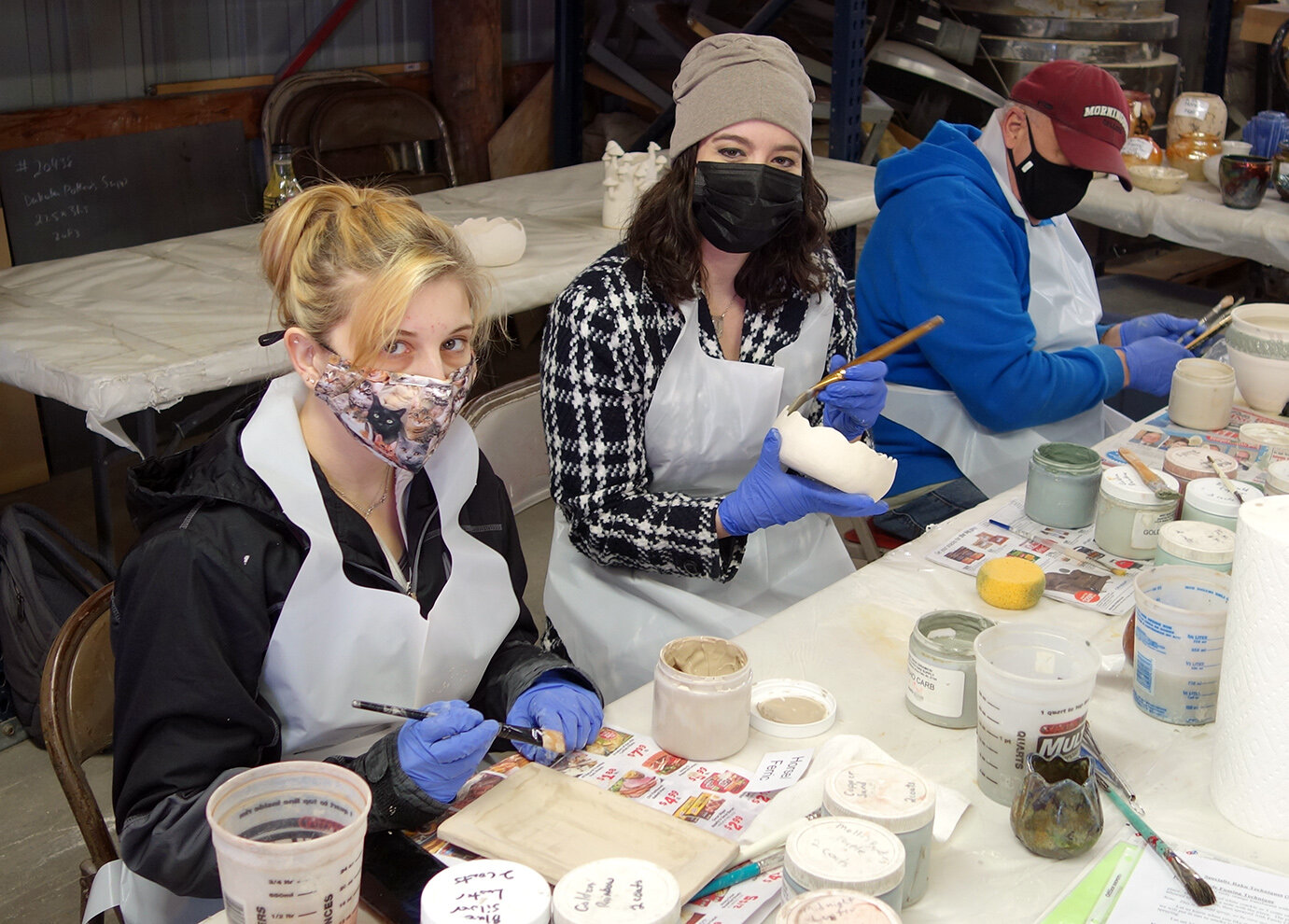
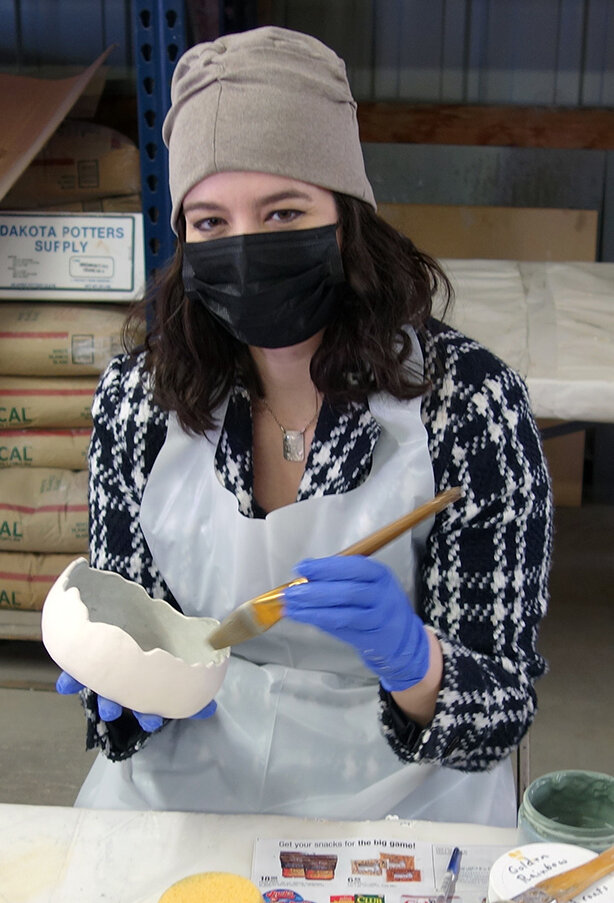
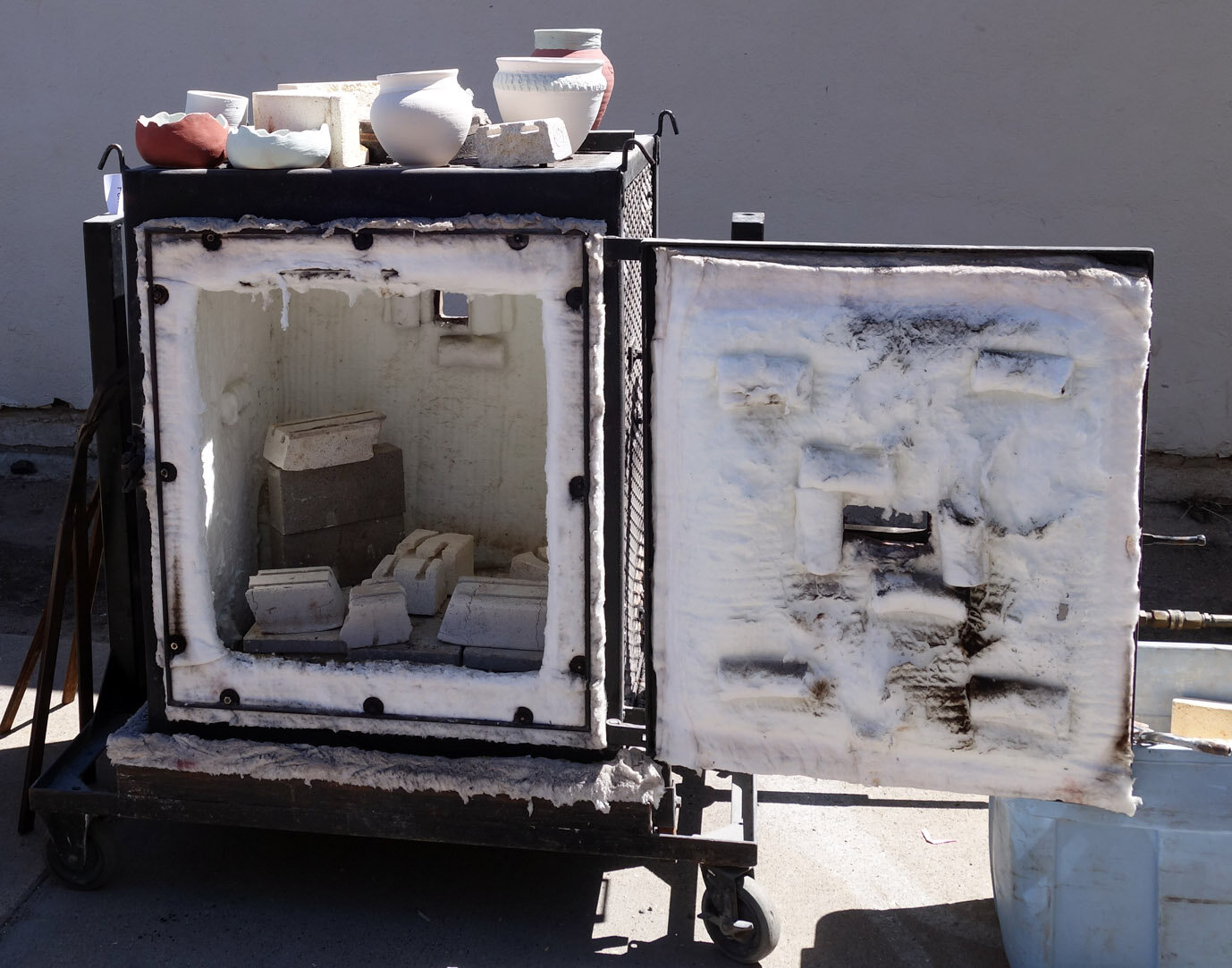
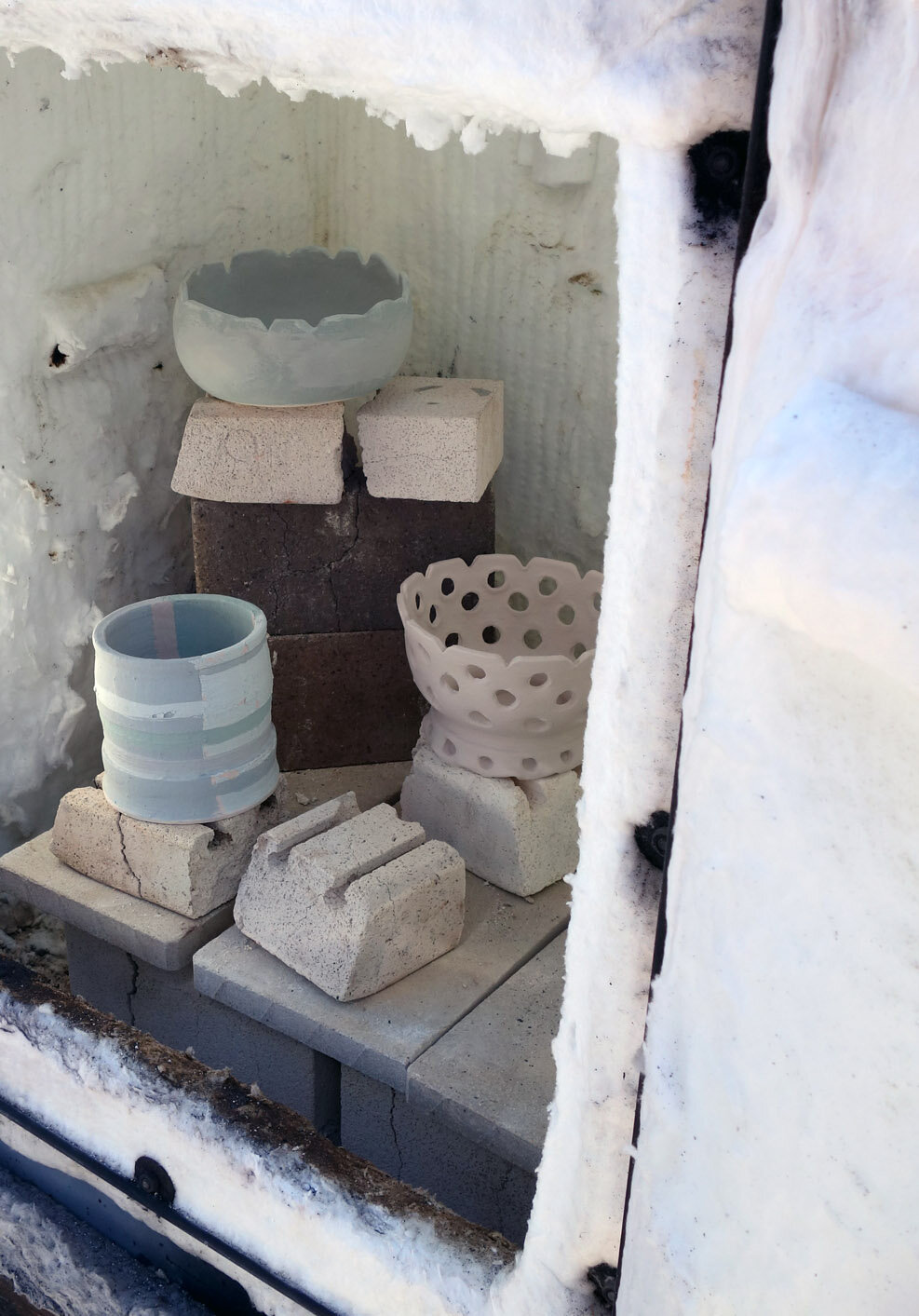
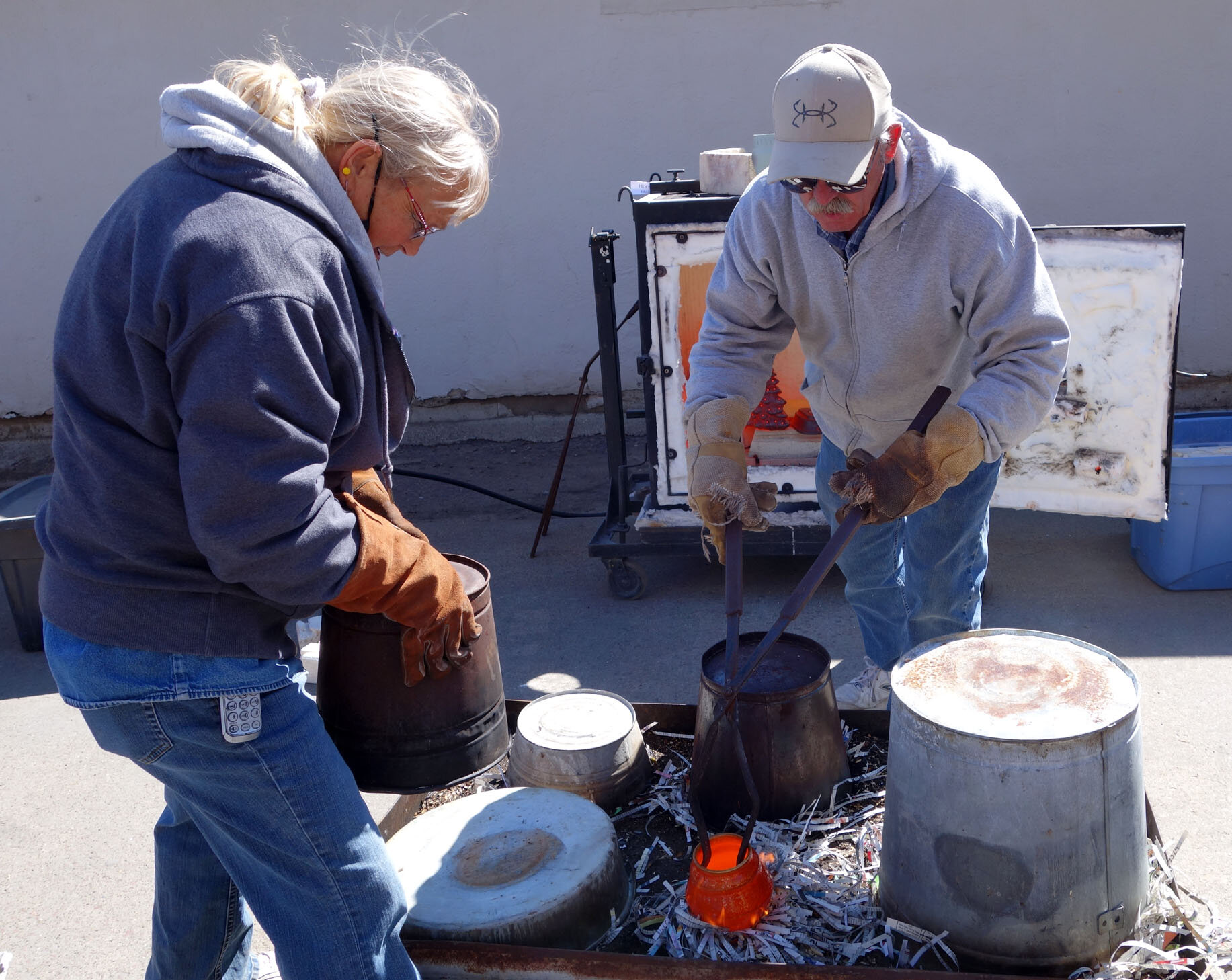
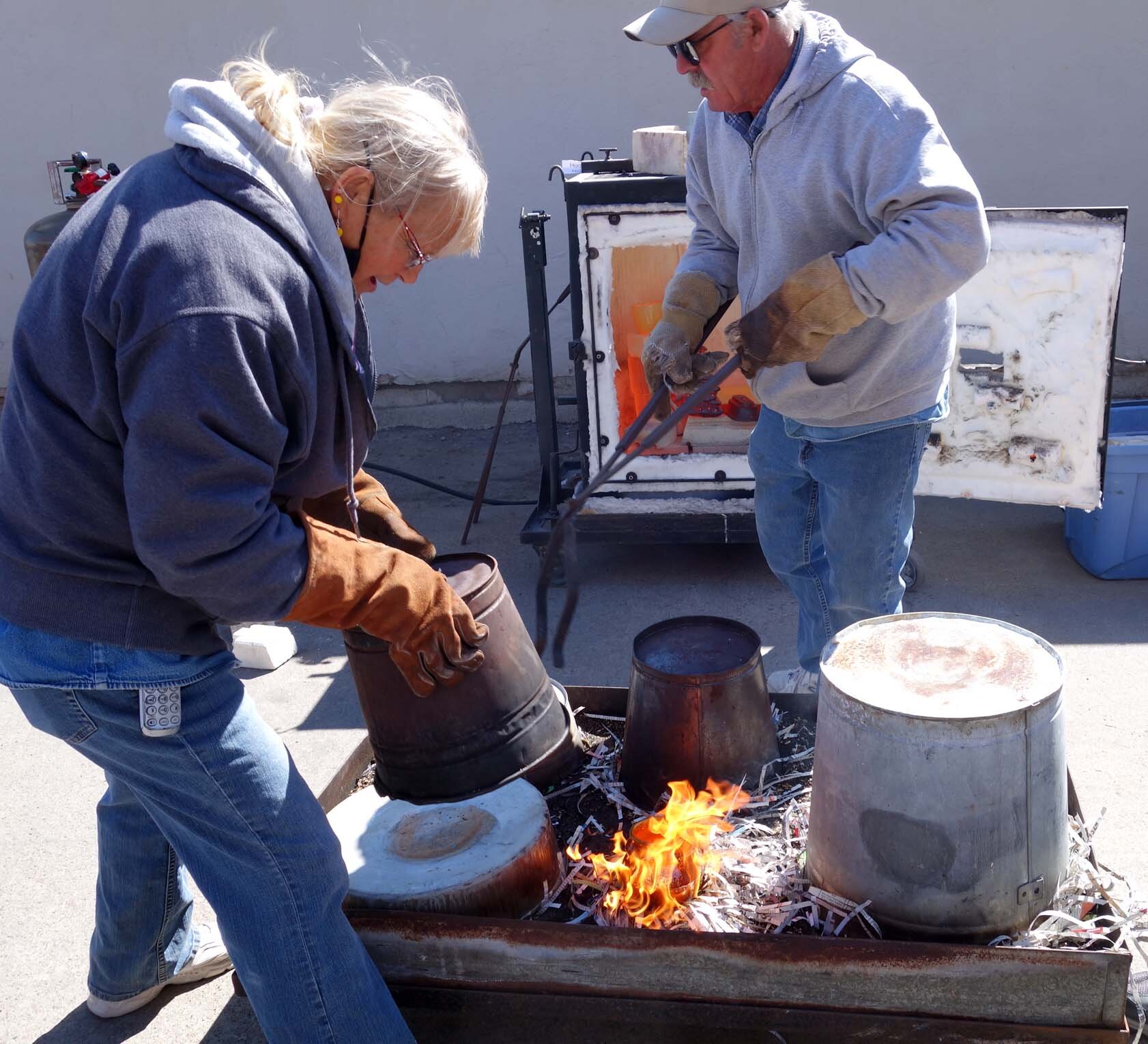
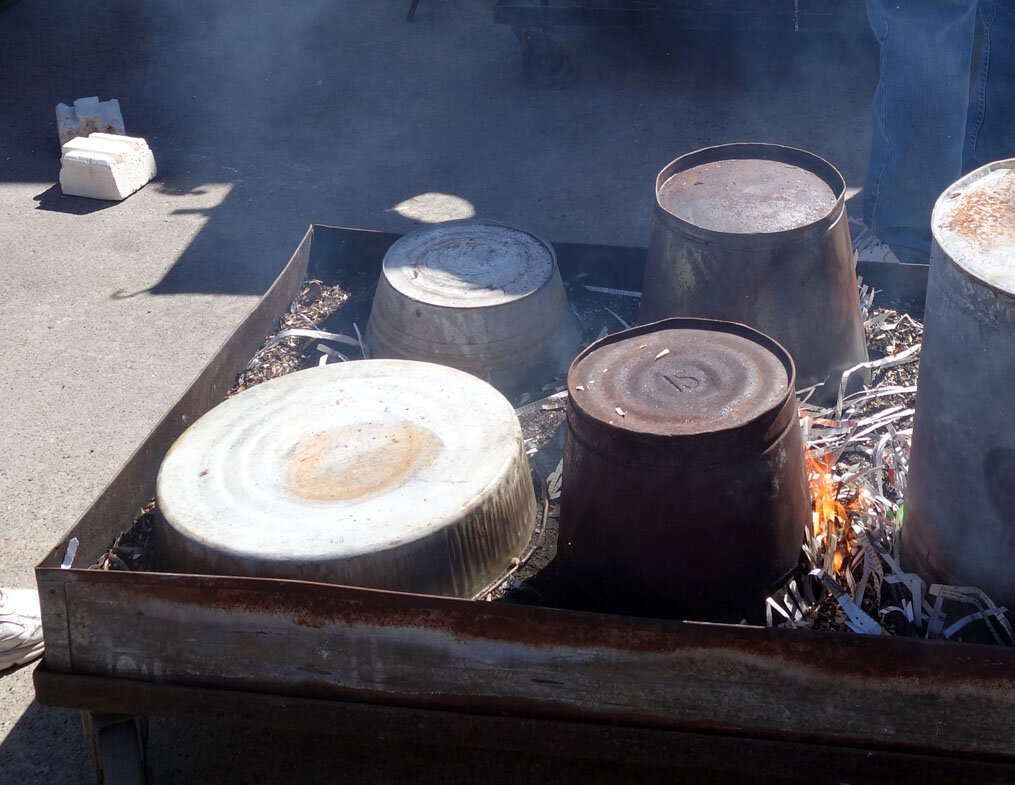
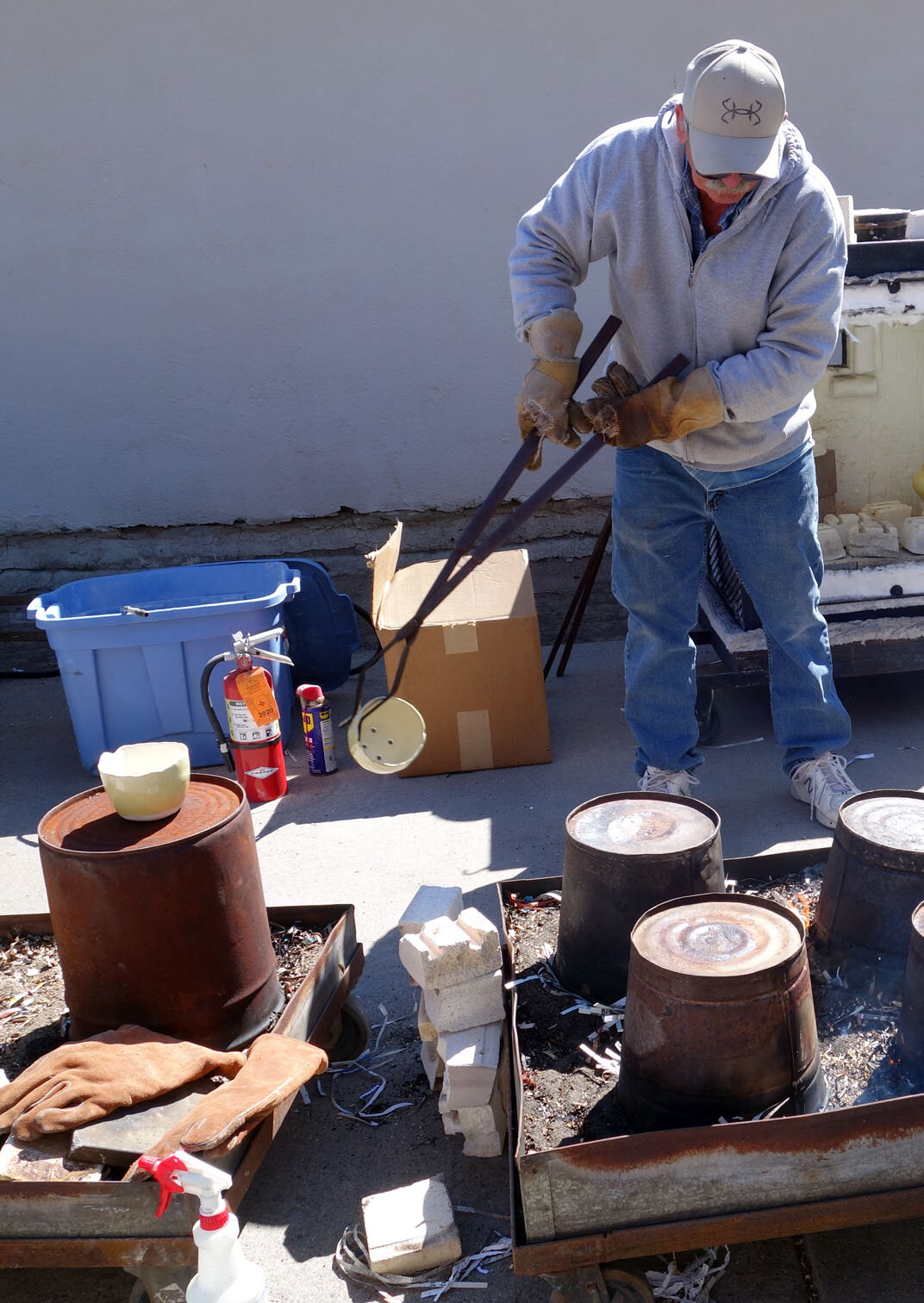
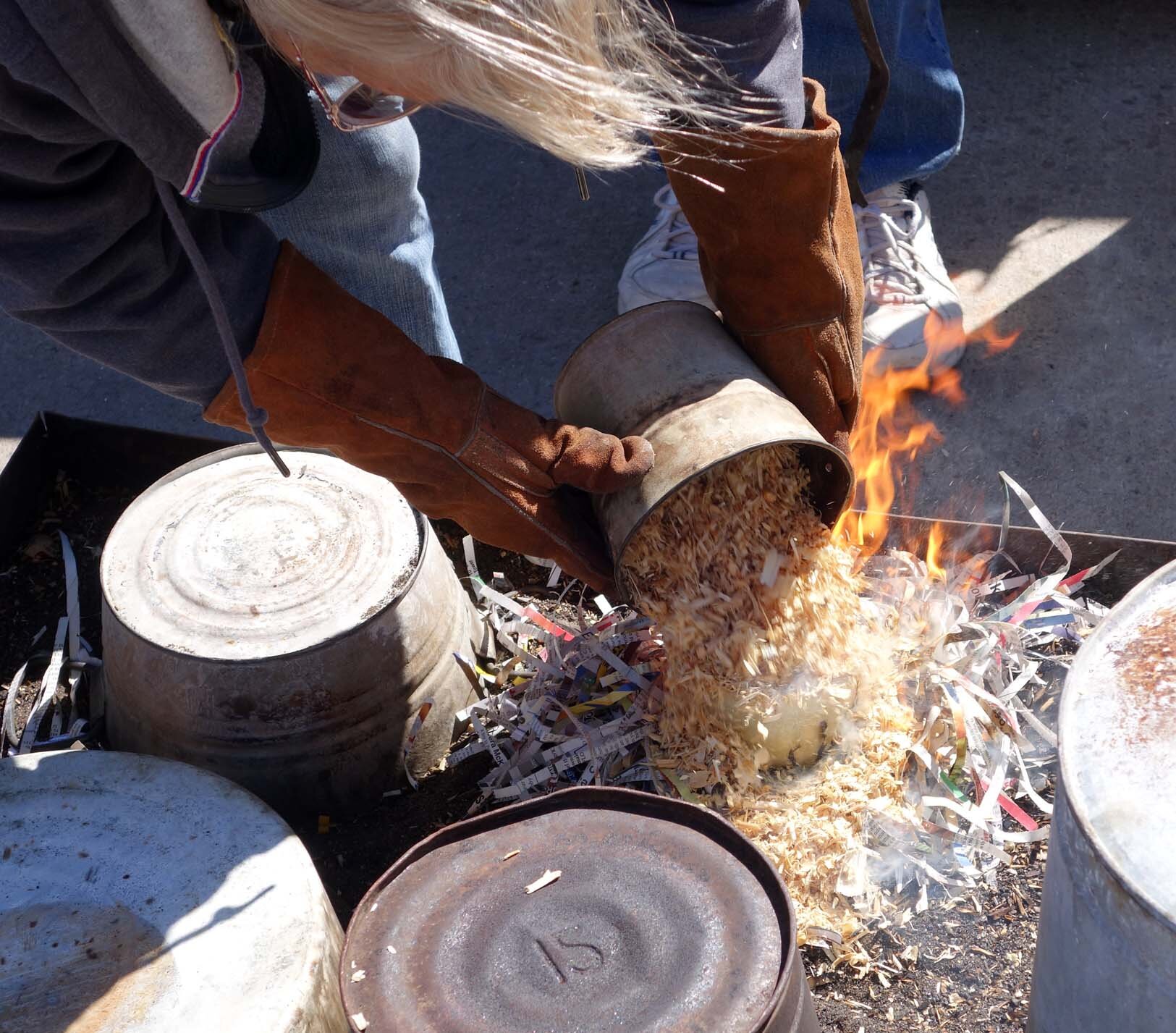
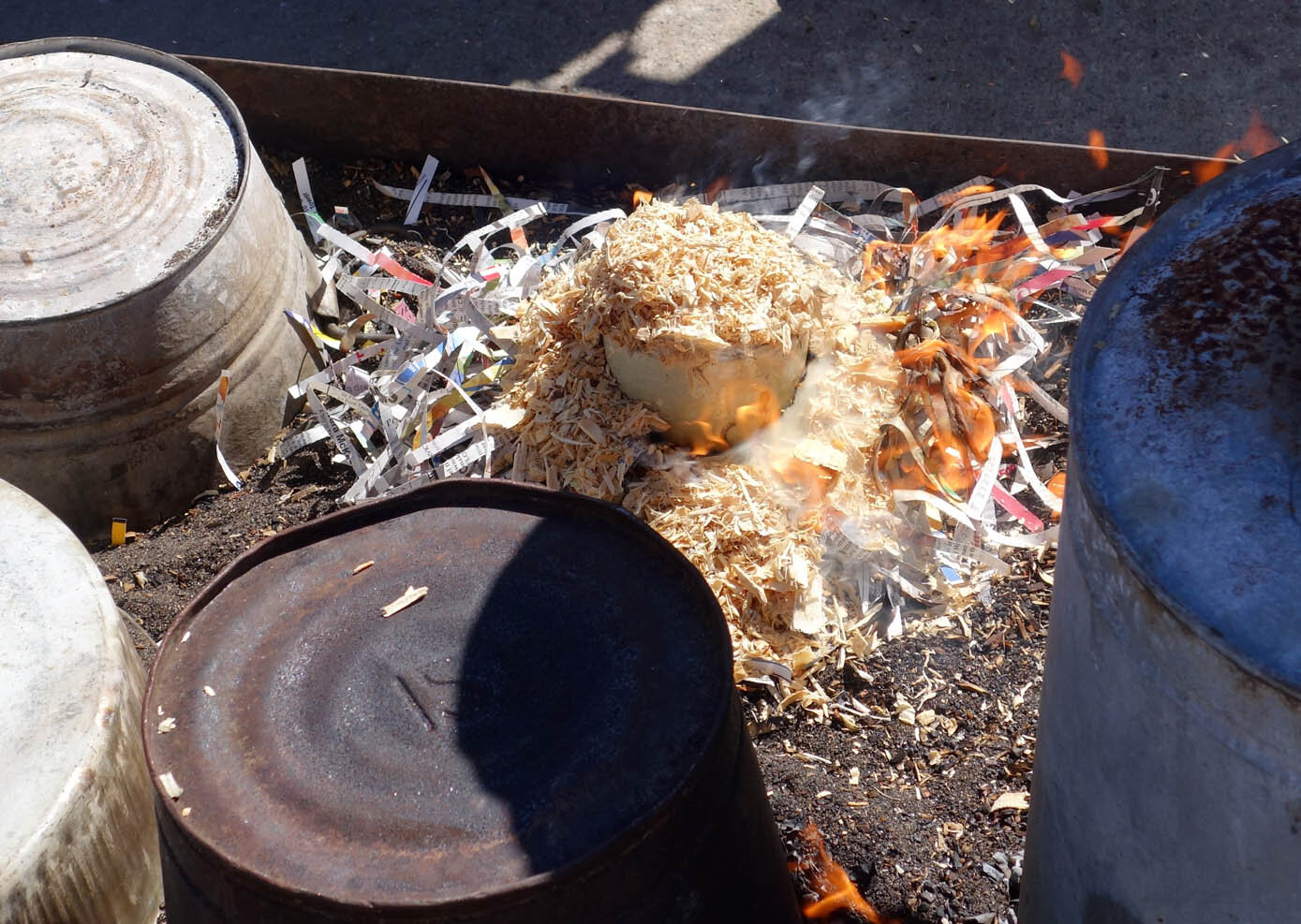
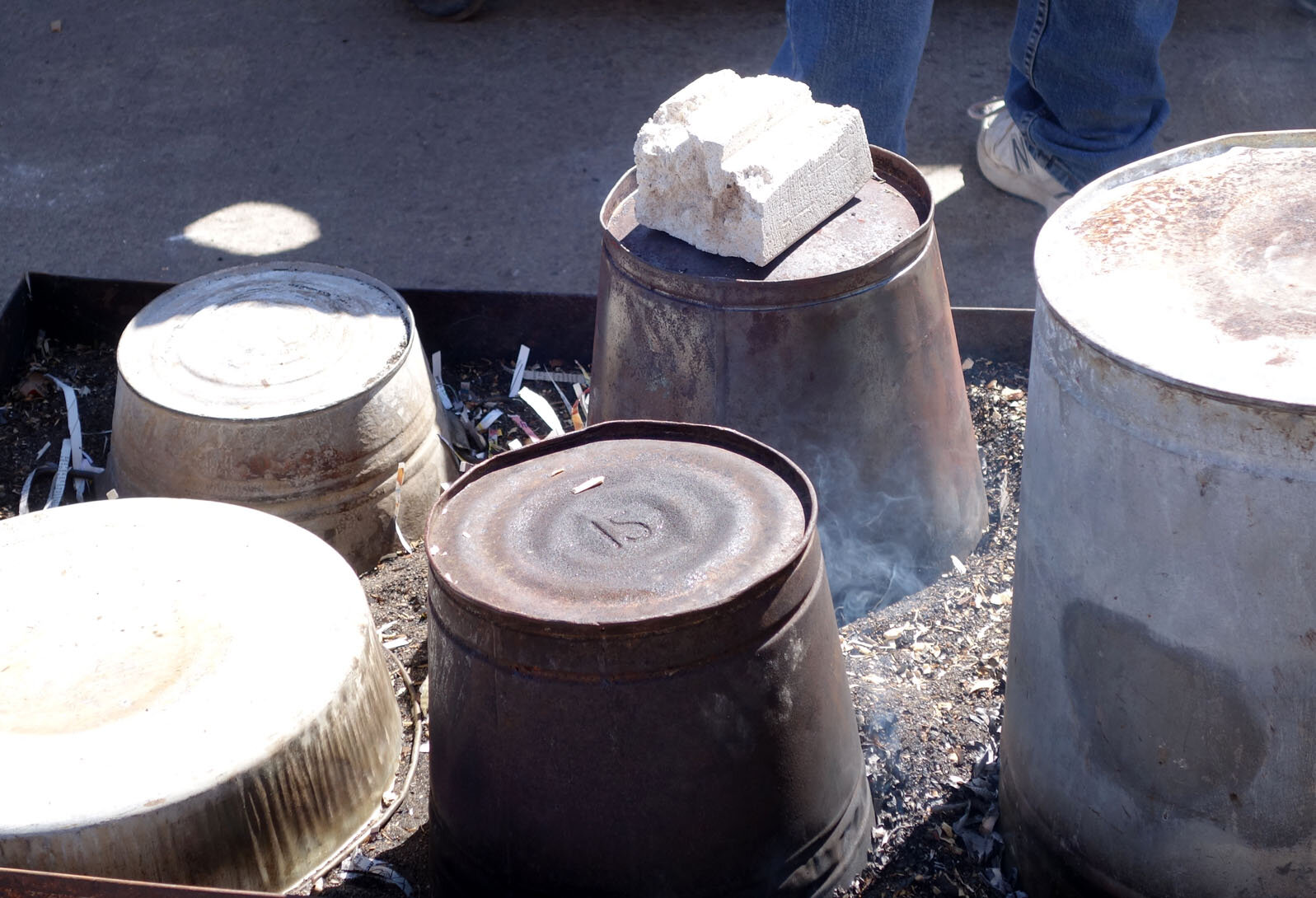
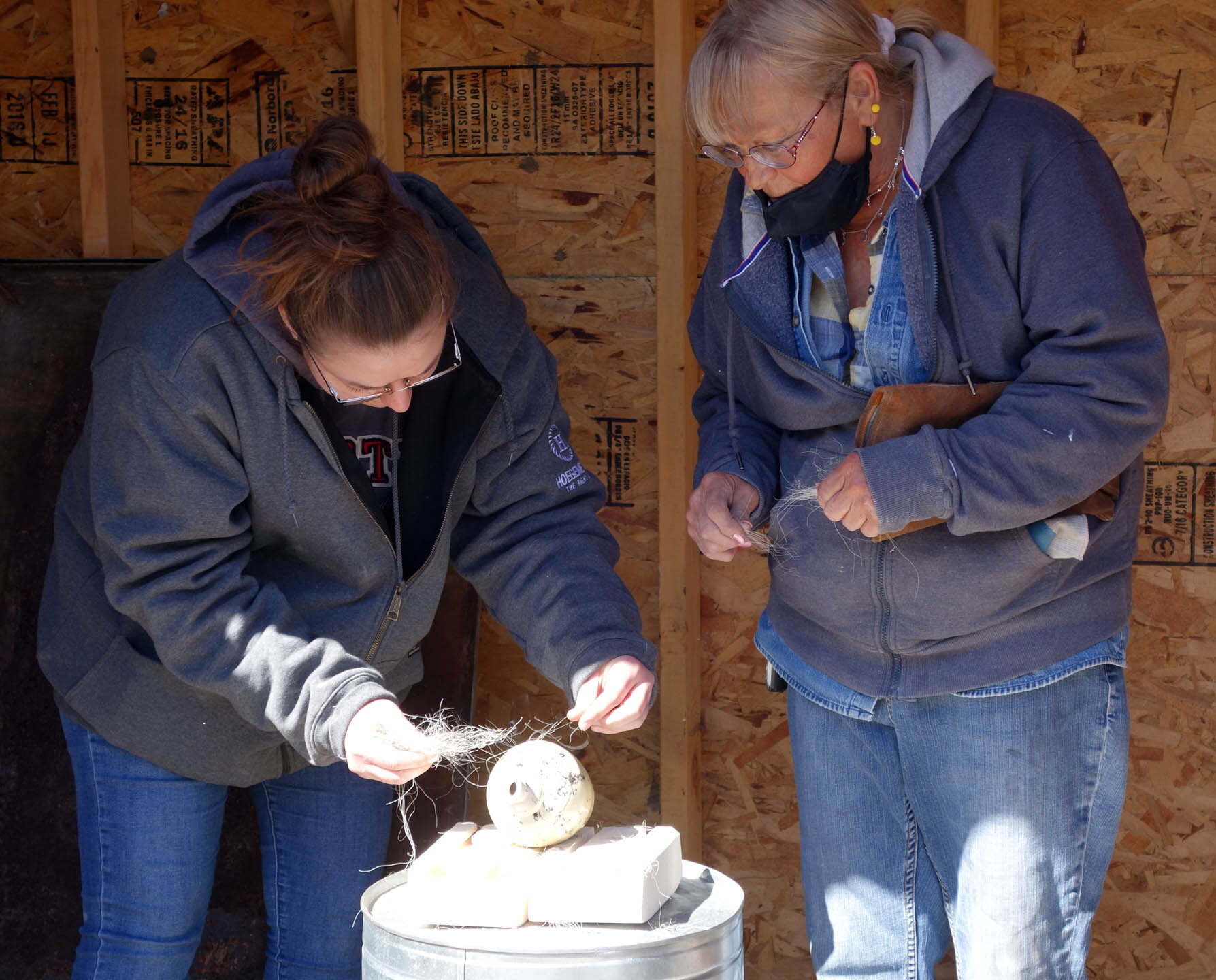
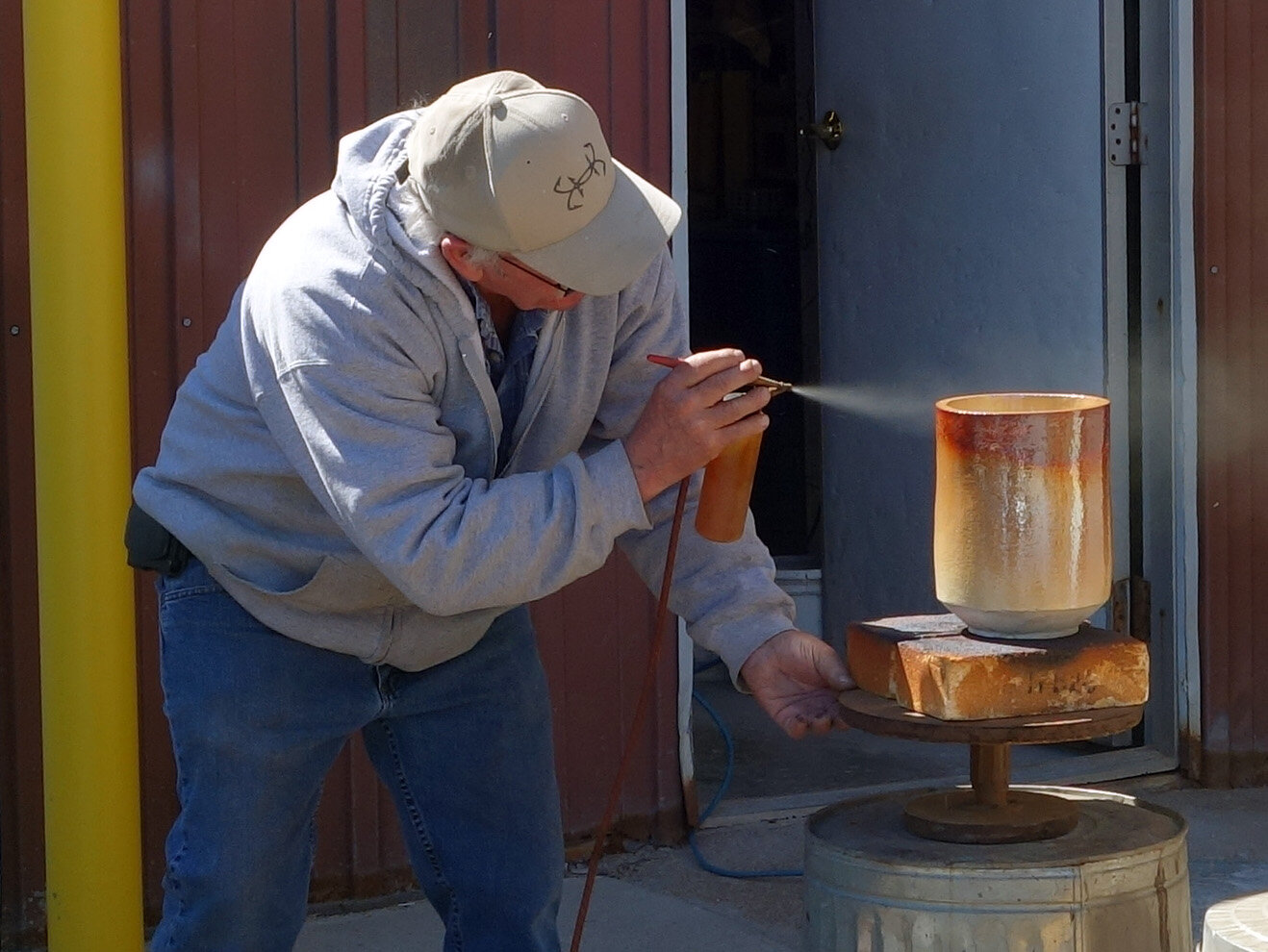
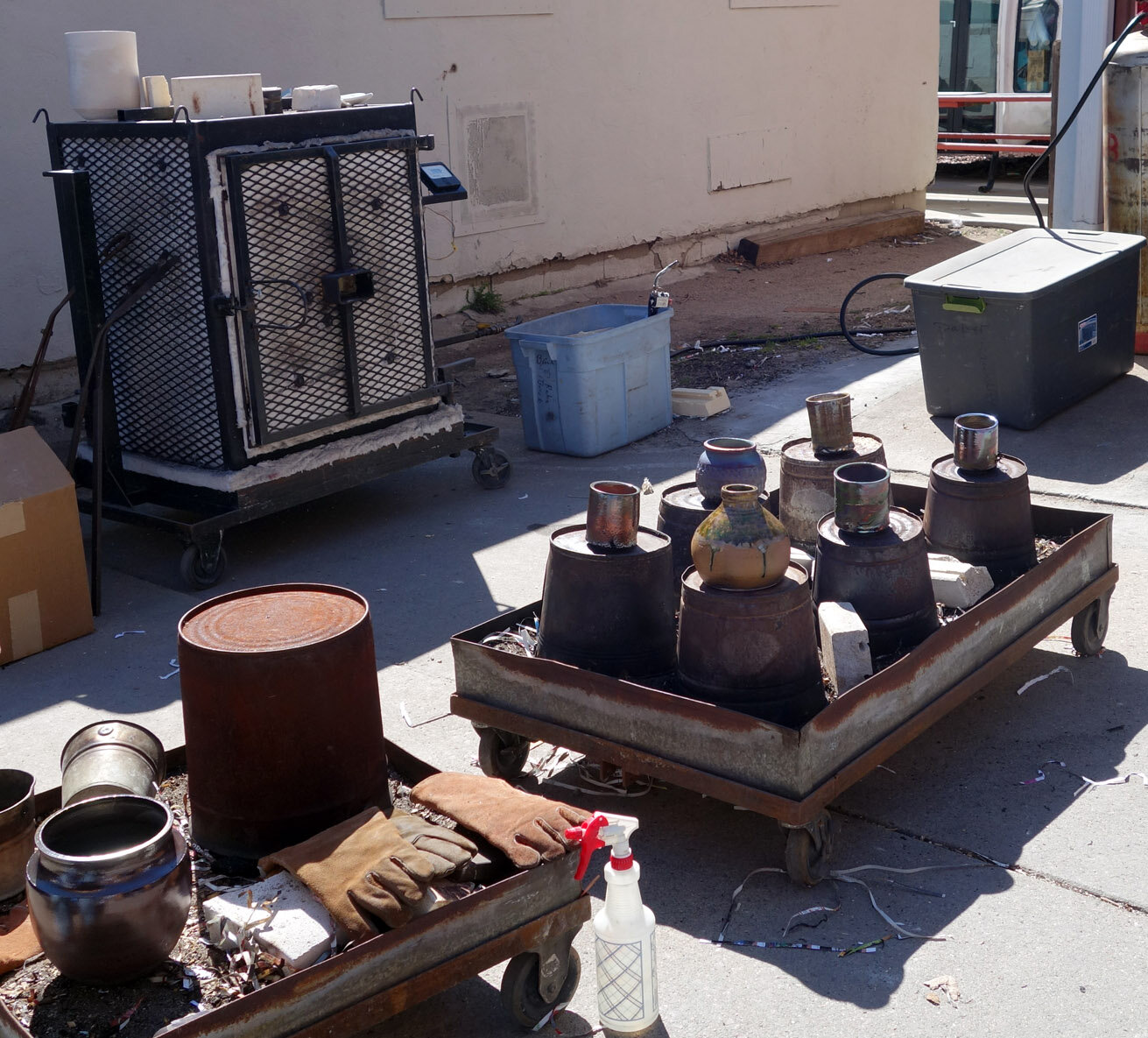
Polyspermy in Plants
I’ve been making hybrid aloe and gastrolea seedlings from my own collection for about a year now, and in my curiosity I looked up whether plants can combine genetics from more than one father in the same seed, which is called polyspermy. This is different than seed pods on the same raceme containing different parentage (one flower being fertilized by one neighbor and another by a different one), which is a common phenomenon; the type of polyspermy in plants that I’m talking about means that one seed has three (or more) biological parents. The answer is apparently yes, but it’s such new research that there’s not yet clear information about which plants can and which cannot; proving it’s even possible only happened four years ago!
I think it’s pretty cool how much there still is to learn and research and document in the world!
Distrust of the Medical Community
I’m going to preface and close this post with my strong support of getting vaccinated, both in general and specifically with the COVID-19 vaccine. I have received both doses of the Pfizer COVID-19 vaccine; the sooner we achieve local and global herd immunity, the sooner we can regain a more normal world.
The United States is beginning to approach a new stage in the COVID-19 vaccination process: we are running out of people excited to queue, and are now attempting to convince those who are passively or actively opposing getting a COVID-19 vaccine to join the vaccinated so that we can reach herd immunity.
I have several students who have told me that they have rejected the chance to get vaccinated against COVID-19. While I haven’t grilled them on their own individual rationales, I know that there may be more than just political beliefs at play. The medical community is not infallible, and those patients who are privileged and/or lucky enough to have always received stellar health care are very fortunate - but others unfortunately do not have the same experiences.
A lot of people including myself bring up the Tuskegee Syphilis Study when discussing this topic. It wasn’t that long ago; it lasted for 40 years and only ended in the 1970s (after a number of earlier attempts to shut it down were unsuccessful). That’s still within the lifespan of people around today. But here’s another example from right now in 2021: nonconsensual pelvic exams unrelated to medical need have been and are still regularly being performed in the United States on women under general anesthesia - with one of the explicit rationales being that if women were asked for their consent beforehand, they might not give it. The state I’m currently living in - Iowa - banned this practice in 2017. That’s only four years ago. Furthermore, most of my life has been spent living in states that allowed or still currently allow this practice. Some doctors and medical institutions continue to lobby for nonconsensual exams under general anesthesia to continue. These can also extend to involuntary rectal exams on both sexes as well as penile and prostate exams. This is, sadly, just another of many examples of systemic medical transgressions and disparities.
As mentioned in the opening of this post, I have recently been fully vaccinated with the Pfizer COVID-19 vaccine, and I am grateful for that! I hope we can convince more folks to join us in this fight to attain herd immunity. But in order to do so, we need to acknowledge that some have legitimate concerns backed by personal or community experiences - and we also need to do better at tackling medical inequalities and oversteps. You can take action, too - through contacting your representatives and advocating for change, donating to organizations that are fighting these battles on the policy and legal fronts, and so on!
It's Commencement!
Well, that was a strange and hard academic year we just finished, due to the pandemic, but I’m proud of our community for getting through it as best we could and being able to celebrate a range of accomplishments along the way.
Today is the graduation for our class of 2021! We had a wonderful string of senior thesis shows over the past month - the disciplines of graphic design, photography, animation, ceramics, drawing, and painting were all variously on display in the exhibitions of Courtney Klocke, Anna Uehling, Abby Koch, Kazune Oguro, and Carissa Powell. In fact, Kaz and Carissa’s two-person show will stay up through May 17th if you haven’t yet seen it and want to stop in!
Scandals in the Houseplant Hobby Part II
If you haven’t read my blog post titled “Scandals in the Houseplant Hobby,” I recommend you do that first, as this is a follow-up!
To recap: plants, notably the Philodendron ‘Pink Congo,’ that have been gassed (or occasionally painted) with ethylene to induce a temporary discoloration that may appear to unsuspecting buyers as a permanent variegation have begun to enter the houseplant trade. At the time of my first post, ‘Pink Congo’ was the only affected type I could list with specificity, but I mentioned that others were out there.
This spring, I’ve so far noticed two more pop up on one of the Facebook groups for houseplants - and this time, they’re both succulents. The first is Crassula ‘Buddha’s Temple’ and the second is Sinocrassula yunnanensis. Here are a couple screenshots I took of the plants for sale - in the second picture, it’s the middle row of plants that are impacted. Both were advertised as being Korean imports.
With the Crassula ‘Buddha’s Temple,’ people challenged the seller who initially defended these plants as untreated, natural variegation, but then a day later returned and admitted that upon follow-up, her importer confirmed that they were fakes. However, at least when I saw it, the Sinocrassula yunnanensis sales post made by a different seller hadn’t attracted any questions or consternation.
To me, both plants look really unnatural and kind of diseased or wrong, but then again I am deep in the hobby and know what plants ought to look like - I also think painted succulents and dyed and fake flowers look bad, so clearly my taste isn’t everyone’s as those treatments do have a ready audience in more amateur growers! I do wholeheartedly believe that any altered plant - whether it be gassed with ethylene, painted, dyed, glued with false flowers, etc. - should come with a clear label that lays out what has been done, the lifespan of the manipulation, and the impact to the health of the plant.
It's National Poetry Month!
I’ve always enjoyed attending annual state poet laureate presentations and have several books of poetry in my own collection. So when Morningside’s creative writing instructor Brendan Todt reached out to me to ask if I’d be willing to record a video of myself reading a poem aloud in support of National Poetry Month for a virtual 2021 Morningside Friday is Writing Day event shared online, I said sure!
Brendan suggested it might be nice if I chose an art-themed poem, which was an interesting challenge. I ended up selecting Three for the Mona Lisa by John Stone!
Birdwatching!
A still from the video - I’m the birdwatcher in the striped shirt!
I love spending time outdoors, and I enjoy opportunities to do so while learning, exercising, and having new experiences. On the first day of spring this year - March 20th - I joined some friends in a birding hike at the Dorothy Pecaut Nature Center in Stone State Park. To our surprise, part of the way through a cameraman appeared to document the event for the local news!
In this ABC television affiliate KCAU 9 video clip, you’ll hear about what we were up to but also get a glimpse of me on the trail - I’m the birdwatcher in the striped shirt, black face mask, maroon hat, and grey backpack. On this hike, I learned how to focus binoculars and became a little more familiar with some of the more common birds in the region: the white-breasted nuthatch, the red-bellied woodpecker, and the downy and hairy woodpeckers (they look very similar but have different beak lengths). We also saw a couple of bald eagles and turkeys, though I had already been able to identify those!
For The Birds: A Story of Lowes' Clearance Plants
I had a few items I needed to pick up at Lowes recently, so I stopped in. As you might suspect of a person who has over 200 plants, if I go to a place for any reason that happens to sell plants, I will also look over the plants. You might be surprised to learn that despite being a person who has over 200 plants, I still sometimes not only look over but also buy plants from Lowes and Home Depot. This is really to their garden sections’ credit; these two big box stores do not just offer the same tried-and-true suite of plants year in and year out but rather - a bit belatedly due to the scale of the endeavor - follow houseplant trends and occasionally offer exciting and somewhat hard-to-find options. (Though if a plant is for sale at Lowes or Home Depot, it isn’t going to be rare for too much longer.)
On this day they had some new-to-me begonias in stock. For the longest time, I wouldn’t grow any begonias because the first time I tried - probably over a decade ago by now - the begonia died extremely quickly and I held a grudge against the whole genus. However, this past summer in quick succession I bought a cane begonia I liked the look of on extreme clearance and obtained a free cutting of another; both did relatively well for me and then I acquired a small Rex begonia a little later. Over this winter, that Rex begonia has begun to flourish and charm me and the two cane begonias have continued to do relatively well. As this nascent collection of begonias was forming, I also began to research more about begonias and now… well, I’m giving them a real try. It’s too early to say whether they’ll be suited for me or I for them in the long term, but I’m enjoying the discovery process.
So, I walk into Lowes’ plant area - which is fully indoors due to the winter - and spot two interesting new begonia cultivars for sale: ‘Linda Dawn’ and ‘Benigo.’ I begin to investigate them closely. The price point is on the high side - $20 each - because they are relatively rare, of medium size, and come with ceramic cache pots. I hem and haw as I look them over about whether I want to pay this much, but I grow more and more inclined not to because the begonias are very clearly partially eaten. In fact, as I really examine the plants, all the young and mature leaves are damaged and missing parts. Only the very newest growth looks whole. It looks quite a bit like caterpillar damage, so I start to think that the greenhouse these were grown in prior to being shipped out had a caterpillar infestation. I don’t see any current caterpillars, though, but I assume the plants were probably fogged as they were shipped out. I decide to walk away, but I’m sad because I would enjoy trying these plants out in my collection if I didn’t feel like the price was unfair for the quality of the plant on offer.
I double back and make my way to a garden center employee I spotted earlier. I ask if there’s any chance I could buy a small cutting or if they might offer a discount on the plants because they are all partially eaten.
The garden center employee knows exactly what I am talking about, and shares with me how the plants are being damaged, which is a genuine surprise to me.
The birds are eating them.
You see, all big box stores with garden centers have become little urbanized ecosystems of their own, complete with wildlife. Pigeons, sparrows, finches, the occasional hawk - there are some animals who spend their whole lives living at a big box store. And this Lowes’ indoor birds have been eating birdseed for sale supplemented with plants they enjoy munching on. Hemigraphis alternata is a very enjoyable snack, and so are these begonias in question.
My new begonias - ‘Benigo’ is on the left and ‘Linda Dawn’ is on the right.
(Apparently this Lowes had for a period of time in the past put kill traps out to catch the birds, but they have since switched to catch and release at a nearby nature center which is a much more humane policy.)
In terms of pest identification, the birds are good news for me in that I am pretty confident I won’t accidentally and unknowingly introduce one of their birds into my collection - which does happen sometimes with insect, fungal, or mildew infestations.
The garden center employee adds that they were considering clearancing these begonias anyway because the plants have been around since Christmas without selling and now there is all the accumulating bird damage, so I am given clearance prices and happily walk away to give both begonia ‘Linda Dawn’ and ‘Benigo’ a try!
My Social Media
If you’re reading this from my blog, well, you’re in the heart of my social media already! I share the most content here, and I always publish new artwork on my blog first. However, I’ve been asked by some colleagues and students what my social media presence is like, particularly regarding my professional social media, so let’s get meta! (Also, note that I run my web browser in dark mode, so that’s why all the images below have dark backgrounds with white text. I find dark mode to be easier on my eyes.)
I retweet this blog, meaning that every blog post I make is also put onto my Twitter account. It’s 99% of my Twitter content; once in a blue moon I will tweet something other than a blog post, but it’s quite rare. I don’t reach many new viewers via Twitter since my own activity on the site is so low, but because it takes no effort to retweet these posts I figure I might as well.
I also publish most new artwork on Facebook and Reddit. On Facebook, though I make art posts public, the engagement is almost entirely from friends, colleagues, and former students. Reddit, however, engages complete strangers.
Often, I publish new artwork on Instagram too. I should be more consistent about posting on it, but for me Instagram begins to feel repetitive given my other sites/applications usage. Occasionally, I also share artwork on MetaFilter, which is text-based and a much smaller and more heavily moderated community than Reddit but is in some ways similar.
I have made artwork, reproduction, and commission sales via my blog, MetaFilter, Facebook, and Reddit. Sales are not my primary goal in engaging with viewers through social media - and I really should set up a shop at some point on this website so I can just direct buyers there - but they are another nice indication of audience appreciation!
I'm a Sioux City Art Center Board of Trustees Member!
Back in October, I learned that the Sioux City Art Center Board of Trustees had a couple openings through a friend already on the Board - so I applied. In December, I had a virtual interview with City Council, and I recently learned that I was approved! I look forward to serving my community in this function for the next two years.
Behind The Scenes of Velocity
Sometimes viewers want to know how a piece of artwork was made, and if there are any in-progress pictures to show the process. I often don’t take as many photos of that as I could; I’m more focused on the creation than pausing for documentation, and I also think that too many process photos can slightly tarnish the magic of the completed piece.
Nevertheless, here’s a photo of the drawing in development of Velocity which underpins the painting! Usually I can get away with mostly only doing a contour and then painting the rest freehand, but this piece is so reliant on form, pattern, and detail that I needed a stronger blueprint for this one.
Amazon.com Subscribe & Save Opacity
I ordered an item on Amazon, and it arrived not as described. I notified Amazon online of this, and they elected to issue me a refund without my needing to bother with returning the item. Great!
A couple weeks later, I’m scanning through my credit card activity as usual just to make sure there are no surprises, and I don’t see this refund. I wait another two days since this happened right around Christmas and I thought it might be delayed/pending without being listed as such. It still doesn’t appear, and other more recent charges have posted.
I call Amazon Customer Service and ask what happened to the refund. The CSR I got - who was a delight - said that contrary to their text description of what would happen, it didn’t refund onto my credit card but rather via an Amazon gift card. I replied that I’ve made some purchases via Amazon since then, and I didn’t see a positive balance or reduced order total. He said I already used the amount. I asked on what, and this is where it gets interesting - “I” used it on a recent Subscribe & Save order.
Subscribe & Save orders, as of this blog post publication date anyhow, do not show up in your order history, and the price you pay each time is not tracked anywhere on the website that’s viewable to the customer. Furthermore, the email I was sent about the item I was going to receive via Subscribe & Save didn’t mention a gift card balance or reduced cost. Unless I noticed on my credit card statement that the amount of that charge was lower than what the email indicated and connected the dots (which I didn’t), there was no other indication to me for what had happened to my refund.
Amazon gave me another refund since the first didn’t make it back to the original payment method, which was nice of them since I was apparently already secretly refunded. However, I think Subscribe & Save orders and payments should be viewable to consumers on the website order history for transparency and better user experience.




